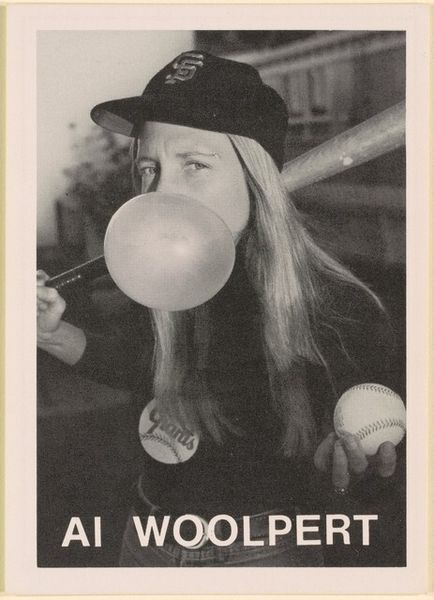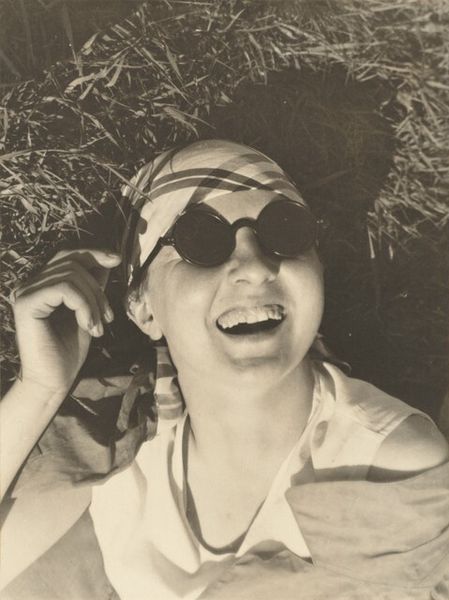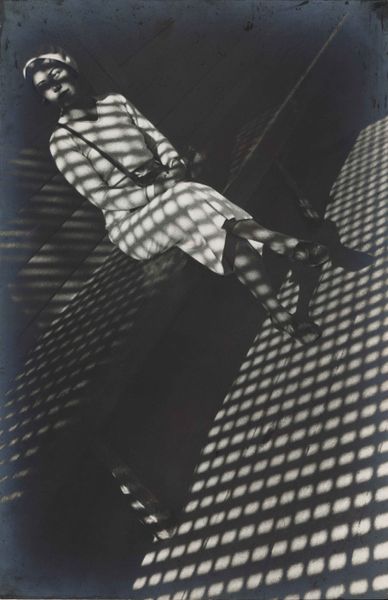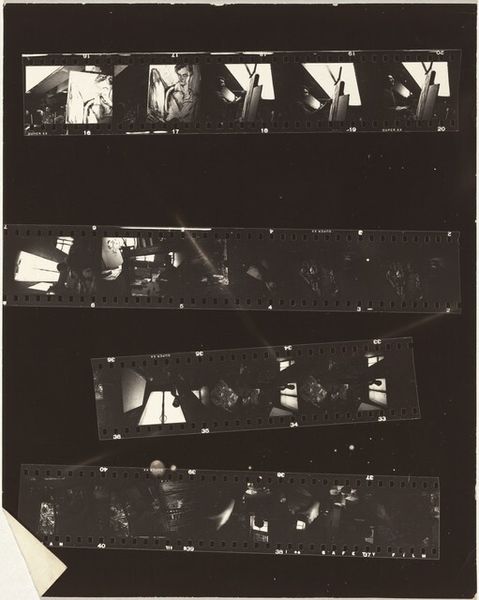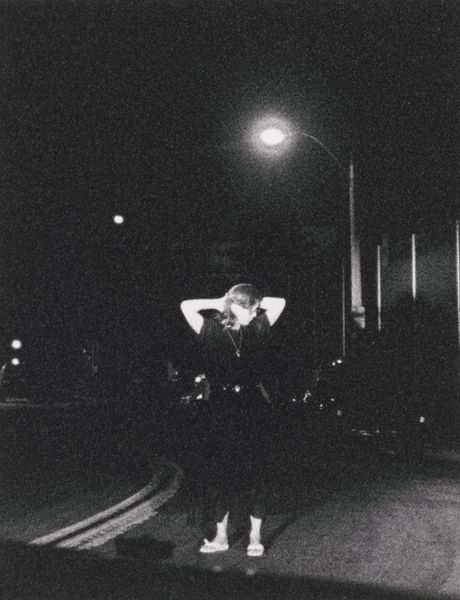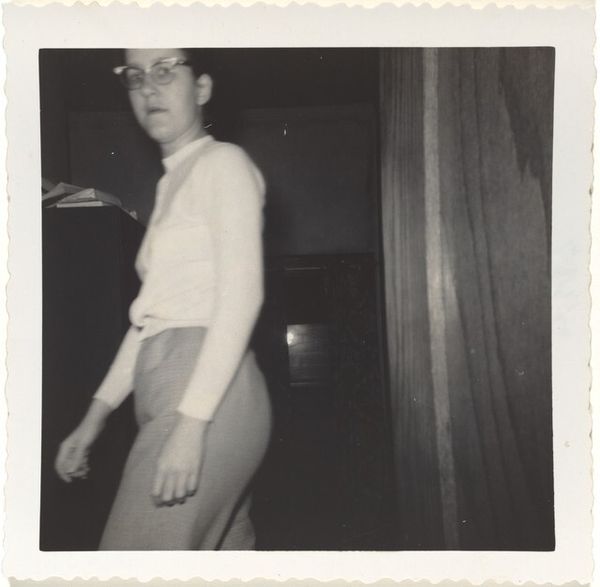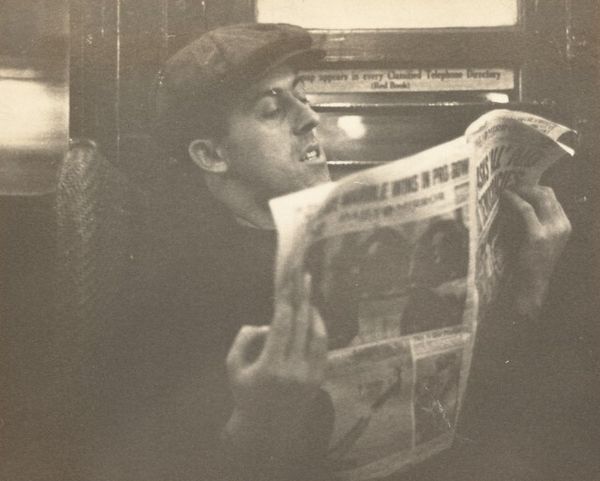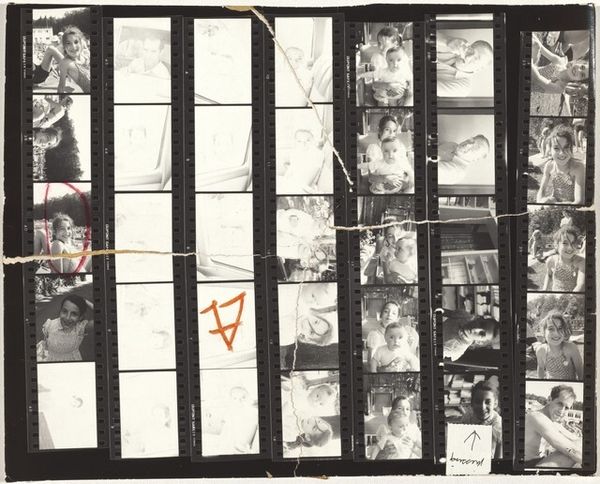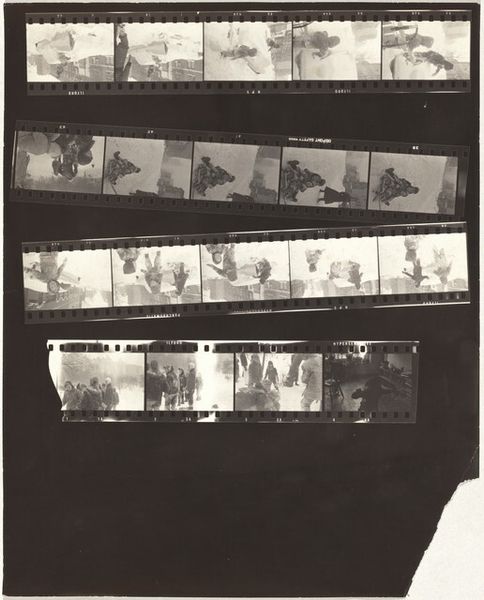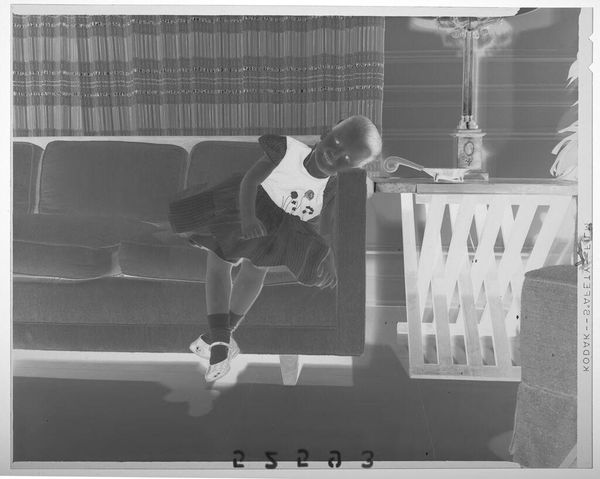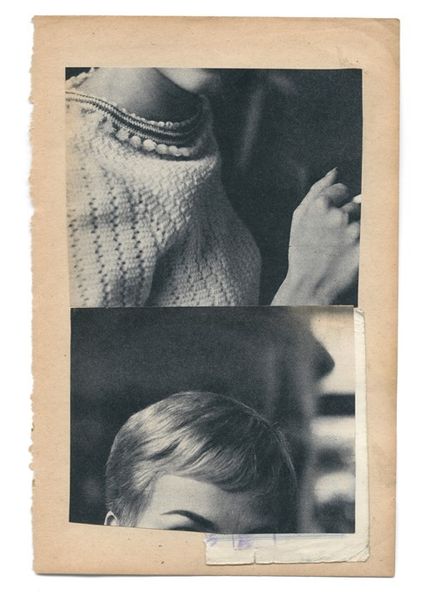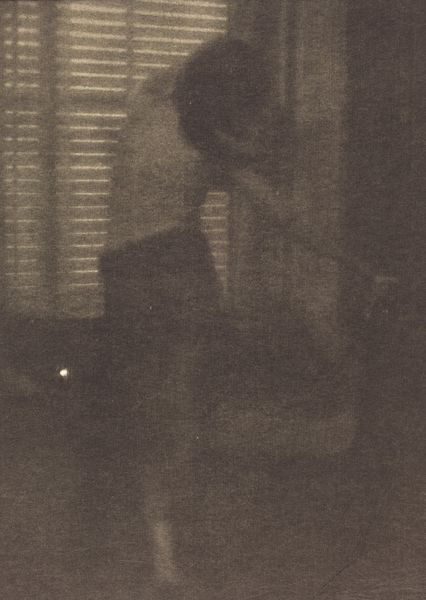
print, photography
portrait
print photography
contemporary
photography
Dimensions: image: 8 × 5.5 cm (3 1/8 × 2 3/16 in.) sheet: 8.9 × 6.3 cm (3 1/2 × 2 1/2 in.)
Copyright: National Gallery of Art: CC0 1.0
Editor: We're looking at Mike Mandel's photographic print, "C. Jansen," from 1975. It's a black and white portrait that feels oddly staged. There’s this homemade backdrop, the direct stare... What historical forces might be at play here, shaping this image? Curator: That’s a perceptive observation. The staged quality speaks to shifts in photography in the 70s. Prior to this, photography strove for objectivity; here, the photographer intervenes. Does the subject’s clothing – that baseball cap and jersey – suggest anything to you about the cultural context? Editor: Baseball is classically American… is that relevant to this staging? Curator: Absolutely. The baseball motif evokes nostalgia and a certain type of idealized Americana, especially during a period of socio-political turmoil like the 70s. Mandel often incorporated elements of everyday life and mass media, critiquing their influence on identity formation. Consider how the artificial backdrop subverts the idea of the "authentic" self. What statement do you think Mandel wanted to make by not calling it a portrait? Editor: It does seem that the work plays with authenticity. The portrait doesn’t have anything to do with who C. Jansen is; the backdrop is more meaningful, but the woman is still present. Maybe a statement on manufactured identity through presentation. Curator: Precisely. It pushes us to consider the power of the photographic medium itself, and its role in constructing our understanding of the world around us, a topic constantly under debate in a world of visual bombardment. This is particularly acute in institutional settings, where choices are carefully and deliberately made by photographers to construct the image for their audience. Editor: So much to unpack! Thanks for sharing, that changes my understanding entirely! Curator: My pleasure. It highlights how crucial historical context and an awareness of cultural politics are when engaging with art.
Comments
No comments
Be the first to comment and join the conversation on the ultimate creative platform.
